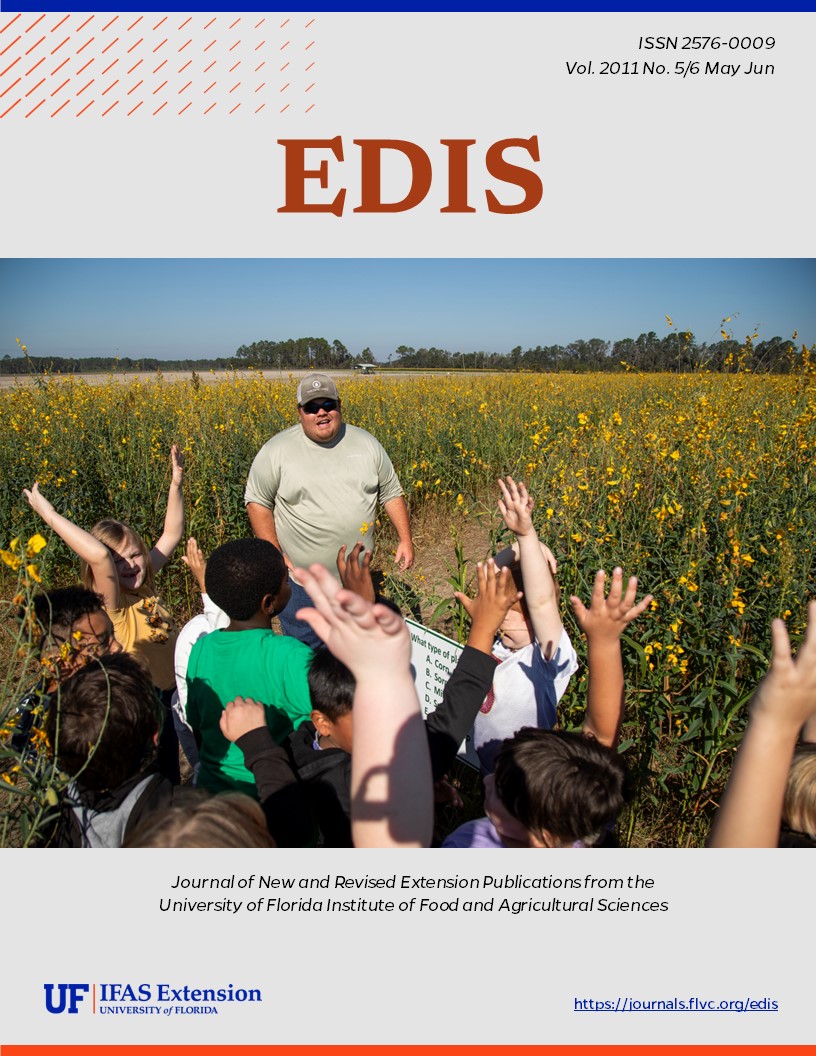Abstract
Sometimes called the giant strong-nosed stink bug, this very large (20 mm) predatory stink bug occurs in several row crops and preys on other insects, especially lepidopterous larvae. The stages in the life cycle are presented here so that they can be identified in the field. This revised 3-page fact sheet was written by David B. Richman and Frank W. Mead and published by the UF Department of Entomology and Nematology, March 2011.
References
Ribeiro RC, Lemos1 WP, Bernardino AS, Buecke J, Müller AA. (January 2010). First occurrence of Alcaeorrhynchus grandis (Dallas) (Hemiptera: Pentatomidae) preying on defoliating caterpillars of oil palm in the state of Pará, Brazil. SciELO. http://www.scielo.br/scielo.php?script=sci_arttext&pid=S1519-566X2010000100018 (10 March 2011).
Watson JR. 1916. Control of the velvetbean caterpillar. Florida Agricultural Experiment Station Bulletin 130: 45-58.
Richman DB, Whitcomb WH. 1978. Comparative life cycles of four species of predatory stink bugs (Hemiptera: Pentatomidae). Florida Entomologist 61: 113-119. https://doi.org/10.2307/3494225
Watson JR. 1922. Report of entomologist. Pages 56R-59R In Newell W. Agricultural Experiment Station Report for the fiscal year ending June 30, 1922. University of Florida, Gainesville.
Whitcomb WH. 1973. Natural populations of entomophagous arthropods and their effect on the agroecosystem. Proceedings of the Mississippi Symposium Biological Control, University Press of Mississippi. p. 150-169.

